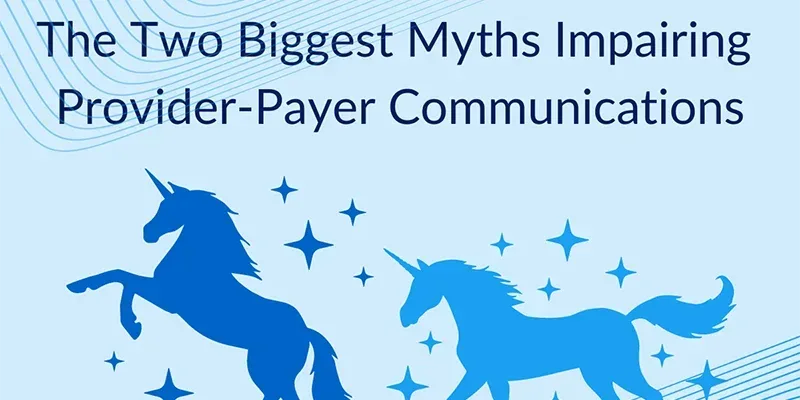Meeting criteria to “turn the light green” can feel like a game of cat and mouse – literally – because it’s overly dependent on the computer mouse as it executes the EMR deep dives and guesswork that’s often baked into traditional, criteria-based solutions.
A click of the mouse to check the box. Click to check another box. Click to uncheck and check another box. Repeat ad nauseum until a light turns green.
A new way of substantiating medical necessity is sorely needed to usher utilization management into its next frontier. Providers are overworked and juggling several different payer organizations’ criteria to receive payment, while payers have “copious amounts of data at their fingertips” but not necessarily the data they need at the admission level to align with providers on medical necessity.
McKinsey says there is significant opportunity to embrace artificial intelligence in healthcare to fix precisely this problem. Yet, stereotypes about the provider/payer dynamic are hindering many from adopting improved technologies. It’s time to kick such myths to the curb, or at least examine them more fairly.
Misconception #1: Providers use data to approve. Payers use data to deny.
When focusing on traditional criteria, it tends to frame medical necessity decisions with a narrower scope. So it is true that a traditional criteria solution could guide a payer to focus on one particular comment to deny. For example, a few words in the EMR may indicate an admission related to a chronic condition, a physician note could detail the intent to observe the patient in anticipation for a quick recovery, or it could reference within an early note that the patient trends towards discharge.
But an analytics-fueled solution – one that renders AI and ML to shape more intelligent decision-making – can provide better insight for payers to see what’s going on medically. When real-time data insights allow for a broader patient view, the member’s acuity becomes the focus. As it should be.
In a nutshell, this limited view of patients and their data is one of the biggest culprits why traditional criteria utilization management solutions can lead to frustration and increased denials. Shouldn’t the information a nurse had on Day One, when they requested prior authorization, be the same exact information they’re going to have in their systems to help with the status alignment cues on the back end, when proving medical necessity?
At the heart of the provider/payer dynamic is the patient. Every time there is a denial, the patient gets caught in the middle, unnecessarily adding costs and time due to misalignment. $265 billion in administrative waste in healthcare is untenable … and a good indication that it’s time to go gangbusters to get rid of these inefficiencies.
Our suggested alternative to the myth:
An aggregated, shared, real-time view of a patient’s clinical data can increase alignment and consistency when determining medical necessity, ensuring a more efficient healthcare system that benefits providers, payers and patients alike.
Misconception #2: Providers are required to use the same screening guidelines as payers.
Because Fee-For-Service Medicare or Traditional Medicare says providers must have a standard screening tool to evaluate those patients when it comes to their HMO or commercial payers, there is a more nuanced way of dissecting this myth.
What does the provider’s contracting department say? Some payer contracts will have certain criteria built in, which must be used. Some payer contracts say they use particular criteria, but the contract doesn’t specify what the provider may be using in their day-to-day operations.
With rare exception in both of these cases, a more AI-driven solution can still be leveraged in the provider’s day-to-day operations to facilitate the peer-to-peer and appeals processes. Collaborative solutions should render both the analytics and predictability to argue traditional medical necessity, and elevate those provider-payer conversations from, “Did I meet criteria?” to provide a more structured and transparent framework for them to talk about true medical necessity.
XSOLIS calls this collaborative framework CORTEX®, which renders an objective view of medical necessity via its Care Level Score, ranging from 0-157. The higher the score, the sicker the patient and the more likely they are to be Inpatient. A score is automatically generated for each patient, and it is continually updated in real-time as more information becomes available within the EMR.
Such objective clinical insights enable task automation within case management, increasing workflow efficiencies so clinicians can engage with the right cases at the right time, and place them in the correct status to demonstrate a more compliant UM process. Payers, in turn, have a trusted and auditable framework for processing status determinations and automating authorizations as well. In short, there is a growing network of payers and providers who are challenging the status quo – embracing AI and ML-driven tools which are informed real-time through EMR data – to change how the healthcare industry evaluates patient status.
